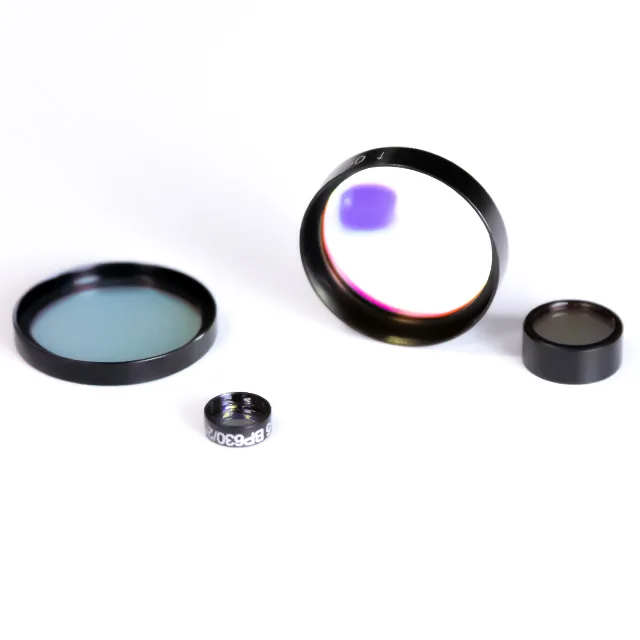“Optics” is an important branch of physics that covers the properties, behavior, and interaction of light with matter. It is used in many fields, including research using telescopes and microscopes, laser technology, and medical imaging. This article will focus on Introducing the various types and applications of optics, let’s read it together!
What is optics?
Optics is a branch of physics that focuses on the study of the properties and behavior of light (including electromagnetic waves such as visible, infrared and ultraviolet) and the interaction of light with matter.
This includes the generation, propagation, changes (such as refraction, reflection, diffraction and scattering) of light, as well as the detection and application of light.
We have written an article before about what is optical filter, detailing their applications and types. You can read it if you are interested.
Laws of reflection and refraction of light
One of the fundamental principles in optics is the behavior of light when it encounters surfaces or boundaries between different materials.
The laws of reflection govern how light bounces off surfaces, maintaining angles and producing clear images in mirrors and reflective surfaces.
The laws of refraction, on the other hand, describe how light bends as it passes from one medium to another, leading to phenomena such as the apparent bending of objects in water.
different types of optics

Now that we have a basic understanding of the basics of optics, let’s explore the different types of optics that have played a key role in shaping our scientific and technological progress.
geometric optics
Geometric optics is the study of the propagation path of light in optical components such as lenses and mirrors. In geometric optics, light is treated as straight lines (rays) and the wave nature is ignored.
This approximation makes it possible to simply calculate the path of light through different optical systems, such as glasses, microscopes, and telescopes. It mainly focuses on the laws of reflection and refraction of light, such as Snell’s law and the law of reflection.
physical optics
Physical optics focuses on the wave properties of light and studies phenomena such as interference, diffraction and polarization of light waves.
This field explains how light waves produce complex intensity distribution patterns when they encounter obstacles, and how different light waves interact with each other through coherence.
Physical optics is the basis for understanding and designing advanced optical instruments such as optical fibers, lasers, and gratings.
Quantum optics
Quantum optics studies the quantum mechanical behavior of light, especially the properties of photons. This includes the generation, manipulation, detection of photons and the properties of their quantum states.
Research on quantum optics can promote the development of laser technology, quantum encryption and quantum computing and other fields, involving the basic concepts of quantum entanglement and quantum information.
nonlinear optics
In nonlinear optics, the nonlinear effects caused by high light intensity when light propagates in a specific medium are studied, such as photorefraction, self-focusing, and harmonic generation.
These effects change the frequency, phase or polarization of light during propagation and are widely used in laser technology, optical switches and optical signal processing.
electromagnetic optics
Electromagnetic optics is based on the view that light is an electromagnetic wave and studies the interaction between light and matter, including processes such as scattering, absorption and radiation.
Research in this field provides the basis for understanding atmospheric optical phenomena, photoelectric effects and spectroscopy, and is also the core scientific basis for modern communication technologies such as optical fiber communications.
biooptics
Biooptics uses optical techniques to explore biological systems at different scales, from molecules to tissues. It involves the use of various optical imaging techniques, such as fluorescence microscopy, confocal microscopy, and optical coherence tomography, to observe and measure the structure and function of biological samples.
The role of optics
Optics plays an important role in many aspects of modern science and technology. Here are a few key areas that demonstrate the role of optics:
Communication Technology: Optics plays a central role in fiber optic communication technology, allowing data to be transmitted at the speed of light through fiber optic networks. This technology has greatly improved the data transmission speed and bandwidth of the Internet and is the basis for global data communications.
Medical Technology: Optical technology is very important in the field of medical imaging, such as in endoscopy, ultrasound imaging, optical coherence tomography (OCT) and various types of laser surgery. These technologies help doctors perform more precise diagnosis and treatment.
Scientific research: Optical instruments, such as microscopes and telescopes, are indispensable tools for scientific research. They enable scientists to observe phenomena ranging from microscopic to macroscopic, from cellular structures to detailed observations of distant galaxies.
Consumer electronics: Optical technology is widely used in consumer electronics, such as image capture and display technology in cameras, smartphones, and virtual reality systems. The performance of these devices relies heavily on the quality and design of the optical components.
Industry and Manufacturing: In manufacturing, optical technology is used for precise measurement and quality control. Laser scanning and optical sensors are widely used in automated production lines to improve production efficiency and product quality.
Energy generation: Optical technology is critical to the efficiency and functionality of solar cells. By designing better optical films and reflective layers, the photoelectric conversion efficiency of solar panels can be improved, thereby utilizing solar energy more effectively.
Defense and Security: In the defense sector, optical technology is used in night vision equipment, laser guidance systems, remote sensing monitoring and high-resolution surveillance. These applications are critical technologies for modern security and surveillance systems.
Through these applications, we can see that optical technology is not only an important part of basic scientific research, but also a driving force for innovation in cutting-edge technologies and daily equipment in multiple industries.
How to choose the right filter for your optical field?

When selecting optical filters, you can follow the following steps:
Determine the spectral range: Determine the spectral range you need to filter or select, such as visible, ultraviolet, or infrared or, depending on application needs, determine the spectral characteristics within the desired wavelength range.
Consider the effect of the filter: Determine the effect that the filter needs to achieve, such as anti-reflection, anti-reflection, color filtering, polarization separation or select the corresponding filter type as needed, such as anti-reflection coating, reflective coating, color filter wait.
Select material and design: Select the appropriate filter material, such as glass, plastic or metal film, based on wavelength range and effect requirements. Ensure that the filter has high transmission and low scattering over the desired wavelength range to ensure performance.
Consider environmental and performance requirements: Consider the application environment and usage conditions, such as temperature, humidity, and chemicals. Select the appropriate filter size and shape based on application needs to ensure compatibility with the device and meet performance requirements.
Consult a professional: Before making a choice, it is best to consult a professional optical engineer or supplier. They can provide custom advice and technical support to help you choose the most suitable filter.
Summarize
In summary, you have learned about the types and other functions of optics. Each optical type has specific application fields and technical requirements, which jointly promote the in-depth development and application innovation of optical technology.
If you are looking for high quality optical filters, consider Optolong. We can customize filters for your specific needs! Please click here to contact us!
